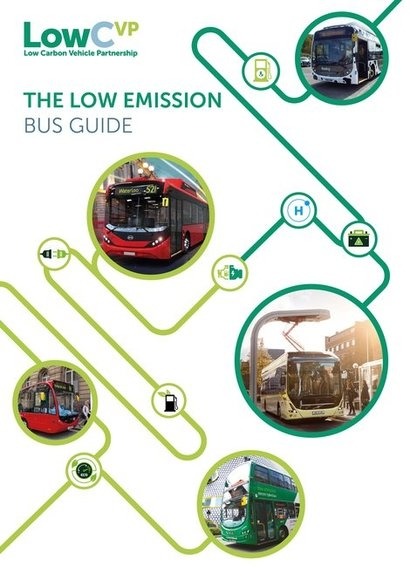
The LCVP report aims to be a a vital reference for bus operators and local authorities, providing an overview of the benefits of a range of low emission fuels and technologies that reduce both air pollution and greenhouse gas emissions. It is intended to equip bus operators and local authorities with information to aid purchasing decisions, and encourage the adoption of the most appropriate low emission bus technology and associated infrastructure for particular routes and applications.
The Guide covers a range of technologies including: electric, hybrid, plug-in hybrid, electrified ancillaries, hydrogen fuel cell, biomethane, renewable diesel and retrofit selective catalytic reduction. It outlines both the emissions performance and the operational and financial factors fleet operators should consider when procuring new buses and the associated infrastructure requirements and implications. Real-world bus operator case studies are provided to highlight and demonstrate the environmental and business cases for the range of different technologies and fuels.
“Buses are the most popular form of public transport and millions of people rely on them every day” said UK Transport Minister John Hayes. “Low emission vehicles can make a real difference to air quality in towns and cities, which is why we have committed £30 million to help pay for more than 300 new cleaner buses. This guide will give operators and councils the information they need to adopt these greener vehicles.”
The LowCVP’s Managing Director Andy Eastlake added that maintaining people’s ability to move around in increasingly congested towns and cities is more critical today than ever before. With road transport responsible for around a quarter of the UK’s greenhouse gas emissions and up to 60 percent of roadside NOx pollution in many cities around the UK, the introduction of cleaner, low emission buses is a key component - and a good example - of how the country can achieve a low emission transport future. The new Low Emission Bus Guide provides clear yet comprehensive advice about which bus fuels and technologies are best suited to a range of operating conditions.
Buses play a vital role in delivering sustainable transport in our towns and cities, providing rural connectivity to a broad cross-section of the population. However, existing diesel buses are a source of air pollution – an issue particularly in urban centres where many buses operate - and greenhouse gas emissions. The UK Government is therefore intending to establish Clean Air Zones (CAZ) which will discourage the use of older, more polluting buses, taxis, coaches and lorries by charging them to access key areas. This in turn will place bus operators under increasing pressure to reduce the emissions impact of their operations.
As the LowCVP’s LEB Guide shows, the purchase of low emission buses can also offer life-cycle cost/total cost of ownership benefits to bus operators, demonstrating a clear business case for choosing alternative technologies.
In 2015, 40 percent of new buses sold met the requirements for low carbon qualification. The UK’s success in rapidly transforming the UK bus market from a significant part of the emissions problem to being a vital component of the solution in terms of clean mobility is a demonstration of effective collaboration between technology developers, operators, policy makers and other stakeholders.
The development of robust assessment processes such as the LowCVP’s Low Emission Bus Test (to show how the Euro VI emissions systems deliver real-world benefits), and the introduction of government support schemes (with LowCVP advice and support) such as the revision to the BSOG incentive and the series of Green Bus Funds, have been important building blocks in this process.
According to Stuart Cottrell, Head of Advanced Engineering, Alexander Dennis Ltd, there are few easy answers to the complex question of which low emission technology is best for each operator, route and service requirements – no one size fits all. Whilst ADL strives to provide the best options across the cost-benefit spectrum its key that the whole landscape is understood. Providing clear, independent information on the range of low and zero emission technologies in the bus sector is key to driving informed debate and fact-based decisions.
For additional information:

